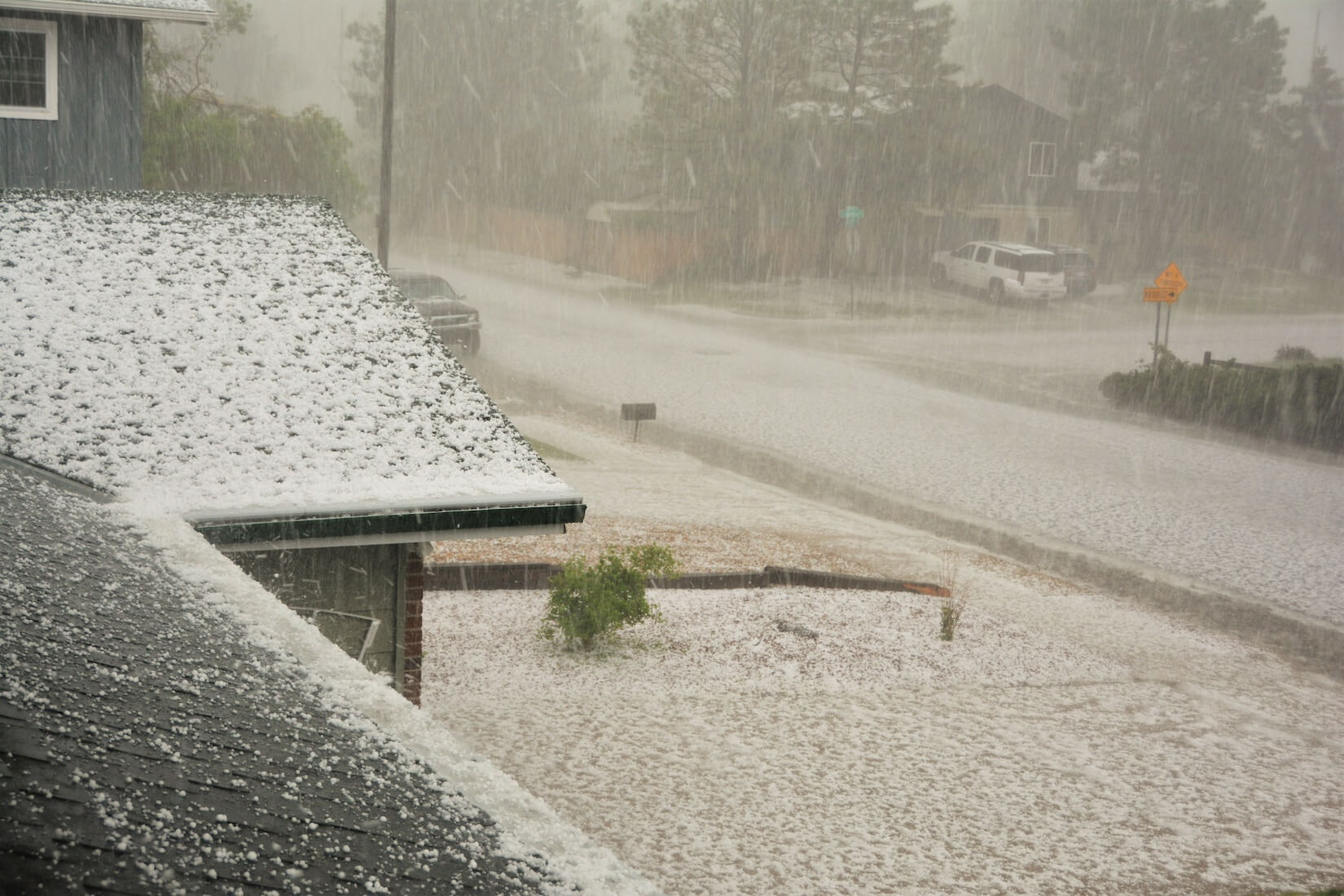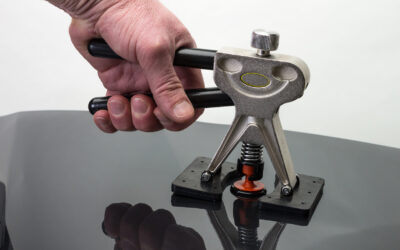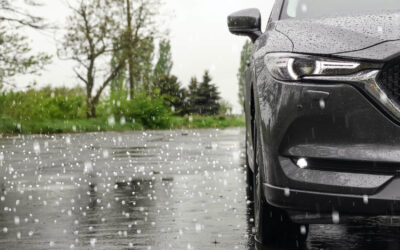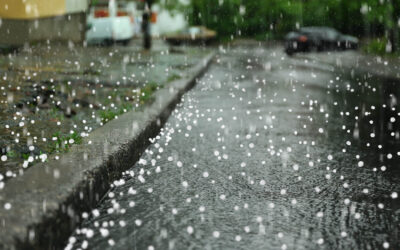Driving in a hailstorm can feel like something out of a disaster film, only there’s no soundtrack, no special effects team, and no pause button. This real-life situation means hailstones are banging into your car from the sides, the front, and above. It can happen fast and without warning.
Hailstorms aren’t just loud and startling; they can become dangerous, especially if you’re caught on the road with limited visibility and nowhere to pull off. And yet, most drivers don’t realize how quickly things can become dangerous.
This blog discusses how to stay safe if you get caught driving in a hailstorm and when to hire an auto hail damage repair expert to fix those inevitable dents.
Why Driving in a Hailstorm Is Dangerous
According to data from the National Weather Service, large hailstones can reach speeds of over 70 miles per hour; at that speed, even small hailstones can seriously damage your vehicle. The body of your car gets damaged, windshields get cracked, and sometimes drivers and passengers get hurt, especially if you’re in a convertible.
But you must worry about more than just the physical damage; it’s the panic. Drivers often freeze or make rash decisions, like slamming on the brakes or swerving across lanes to reach cover. The confusion created by a sudden hailstorm is where the trouble begins.
The First Thing to Do When a Sudden Hairstorm Strikes
The most important thing to remember is to stay calm; don’t panic. Keep cool even if the hailstones are big and the noise is loud. Take a deep breath and follow these steps:
- Stay steady on the wheel
- Take your foot off the gas
- Slow down gradually
Sudden braking on slick roads can lead to hydroplaning or cause the driver behind you to rear-end your vehicle. Even if you’re driving at midday, switching on your low-beam headlights helps with visibility, not just for you, but for the people around you.
Should You Pull Over in a Hailstorm? What Most Drivers Get Wrong
It’s a common reaction: hail starts falling, and people look for the closest overpass or tree cover. But pulling under an overpass during a hailstorm can create new hazards. Traffic narrows, sightlines disappear, and rear-end collisions become more likely. Stopping under an overpass is one of the most dangerous moves a driver can make in a storm scenario.
Instead, look for a proper shoulder or, ideally, a parking lot. Signal early and pull as far off the road as you safely can. Once you’re stopped, turn on your hazard lights and fasten your seatbelt.
Why Staying in Your Car Might Be the Safest Option
It might feel counterintuitive, especially if the hail is loud, there’s breaking glass, or you feel trapped, but staying inside your vehicle is almost always the safest option. Windshields are made with laminated safety glass and are far less likely to shatter than side windows. The metal frame of your car offers a basic form of protection that you simply can’t replicate outside.
Unless you’re in a flash flood zone or a structurally unsafe area, you’re better off waiting out the storm from the driver’s seat.
How to Protect Yourself if the Windows Shatter
Your windows could break, especially with large hailstones or side-glass exposure. If you’re still in the car when this happens, you’ll want to act quickly but carefully:
- Use a coat, sweatshirt, or blanket to cover your head and upper body.
- If nothing is handy, reach for your car’s floor mat and hold it over your face and neck.
- Stay low. Duck slightly below window level and shield your eyes.
- Avoid leaning against the glass or doors.
- Wait until the hail has fully stopped before attempting to move.
The key to staying safe around flying glass is to keep yourself covered up as much as possible. If you don’t have a garment to cover yourself, turn your head and shield yourself with your arm.
What to Watch for When the Hail Finally Stops
The storm eases, and a brief silence often feels as eerie as the storm itself. This is when many drivers breathe a sigh of relief and immediately get back on the road. But hold off just a few more minutes.
Check your mirrors, listen for emergency sirens, and scan the road ahead quickly. Other drivers may have lost side mirrors or lights, or be pulling out from ditches or shoulders at odd angles. If your windshield is cracked or your wipers are damaged, you should call for help instead of driving the rest of the way.
Also, take a second to inspect your lights. If your rear or brake lights were damaged during the storm, your car may not be road-safe until repaired.
Common Mistakes Drivers Make When Falling Hail Hits
Drivers often assume that speed will carry them “out” of the storm faster. In truth, hail usually moves with or ahead of the traffic flow. Driving faster only reduces reaction time and increases risk. Others think pulling under a tree or parking garage entrance is good enough, but windblown hail can still cause damage from the sides unless the structure is fully enclosed.
Perhaps most dangerously, some drivers open their doors mid-storm to check the damage or switch seats with a passenger. Not only can this expose them to flying hail, but it also weakens the vehicle’s structural protection when it’s most needed.
Hail Storm Damage Repair Services in Denver
Denver is located in Hail Alley, which gets more large hailstorms than anywhere else in North America. So, if you live in the Denver area, chances are you’ve been caught in a hailstorm or will be at some point.
Mile High Dents offers premium hail dent repair, including paintless dent repair. You can get a free quote or book an appointment, and our hailstorm damage specialists will evaluate your vehicle and give you the best possible repair options. If you’d like to discuss your situation, call us at (720) 772‑0133. Our team is available during business hours to answer questions or help you schedule a visit.
At Mile High Dents, we specialize in paintless dent repair (PDR) for all types of vehicles across the Denver metro area. Whether you’re dealing with hail damage, an annoying door ding, or a larger dent, our expert technicians restore your vehicle to like-new condition without repainting, sanding, or fillers.





